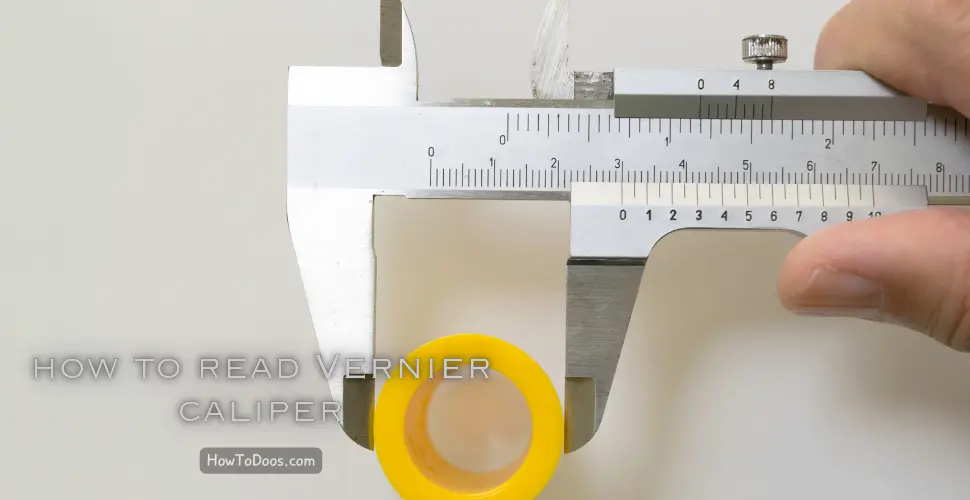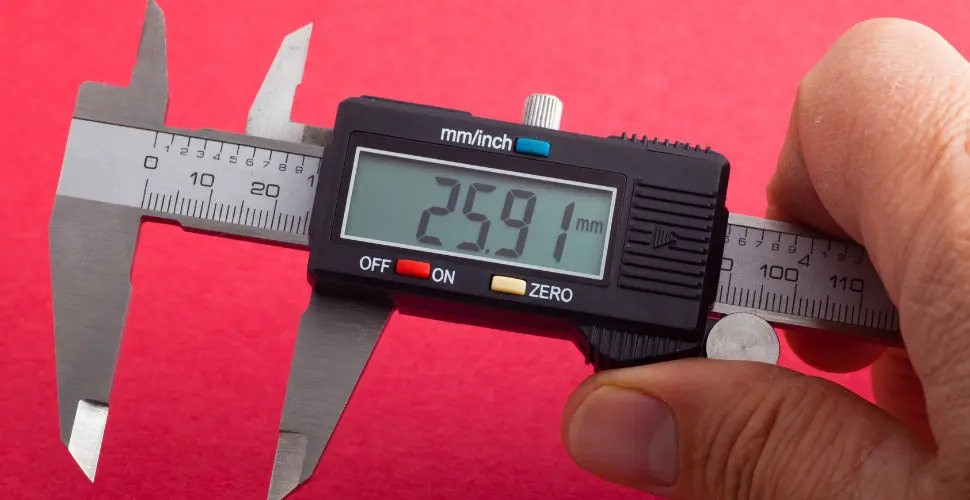How to Read a Vernier Caliper: A Simple Guide
-
 Emily Carter
Emily Carter - 08 Sep, 2024

Vernier calipers are essential tools used in various fields such as engineering, machining, and science. They are capable of measuring internal and external dimensions, depths, and lengths with high precision. While they might seem complex at first, learning how to read a Vernier caliper can significantly improve accuracy in any measurement-related task.
 In this guide, we’ll explain the components of a Vernier caliper, how it works, and how to read it accurately.
In this guide, we’ll explain the components of a Vernier caliper, how it works, and how to read it accurately.
Components of a Vernier Caliper
Before understanding how to read a Vernier caliper, let’s take a look at its main components:
- Outside Jaws: Used to measure the external dimensions of an object.
- Inside Jaws: Used to measure the internal dimensions such as the diameter of a hole.
- Depth Rod: A slender rod at the end of the caliper used to measure the depth of an object.
- Main Scale: The larger scale on the caliper, usually marked in millimeters or inches.
- Vernier Scale: The smaller, sliding scale used to achieve more precise measurements, often providing readings to 0.02mm or 0.001 inches.
- Locking Screw: Helps to lock the sliding jaw in place after taking a measurement to prevent accidental changes.
Understanding the Main Scale and Vernier Scale
Main Scale
The main scale of a Vernier caliper typically measures in millimeters (mm) or inches. On this scale, each division typically represents one millimeter or one-tenth of an inch. This is where you’ll read the base measurement before adding the more precise reading from the Vernier scale.
Vernier Scale
The Vernier scale provides the fine-tuning for your measurement. This scale has subdivisions that allow you to read more precise measurements (up to 0.02 mm or 0.001 inches, depending on the model). When combined with the main scale, it allows for highly accurate readings.
How to Use a Vernier Caliper
Follow these steps to measure an object:
- Prepare the Vernier Caliper: Ensure the caliper is clean, zeroed, and unlocked.
- Open the Jaws: Gently open the caliper’s jaws by sliding the movable part until it fits the object being measured.
- Measure the Object: Position the object between the caliper’s outside or inside jaws, depending on the type of measurement (external or internal).
- Lock the Scale: Once you’ve taken the measurement, use the locking screw to secure the reading.
- Read the Main Scale: Find the reading on the main scale just before the “zero” on the Vernier scale.
- Read the Vernier Scale: Look at the Vernier scale and find the line that perfectly aligns with one of the main scale divisions. This is your precise measurement.
Example of Reading a Vernier Caliper
Let’s walk through an example to explain how to combine the readings from the main scale and Vernier scale.
-
Main Scale Reading: Look at the main scale and note the measurement just before the zero on the Vernier scale. If it’s between two marks, choose the smaller one. For example, if the reading is between 3.0 and 4.0 mm, choose 3.0 mm as your main reading.
-
Vernier Scale Reading: Now, find the line on the Vernier scale that aligns exactly with a line on the main scale. Let’s say the 0.08 mm mark on the Vernier scale aligns with the main scale.
-
Final Reading: To get the final reading, add the main scale reading to the Vernier scale reading:
- Main Scale: 3.0 mm
- Vernier Scale: 0.08 mm
Final Measurement = 3.0 + 0.08 = 3.08 mm
Measuring Internal, External, and Depth Dimensions
External Measurement
To measure the external size of an object, place it between the outer jaws of the caliper and slide the jaws together until they gently touch the object. Ensure that the caliper is perpendicular to the object for accurate measurements.

Internal Measurement
For internal dimensions like the diameter of a hole, use the inside jaws of the caliper. Insert the jaws into the object and open them until they make contact with the internal sides. Take your reading as described above.
Depth Measurement
The depth rod on the caliper can measure the depth of holes or recesses. Insert the depth rod into the object until it reaches the bottom, and then take your reading.
Tips for Accurate Measurements
- Zero the Caliper: Before taking a measurement, ensure the caliper is properly zeroed by closing the jaws completely and checking if the Vernier scale’s zero line aligns with the main scale’s zero line.
- Keep the Caliper Clean: Dust, dirt, and oil can affect the accuracy of your measurements. Clean the caliper regularly to prevent buildup.
- Use Gentle Pressure: Apply only gentle pressure when measuring. Too much force can deform the object or skew the reading.
- Check for Parallax Error: Parallax error occurs when the scale is read from an angle rather than straight on. Always view the measurement from directly above to avoid this issue.
Advantages of Using a Vernier Caliper
- High Precision: Vernier calipers offer precision down to 0.02 mm or 0.001 inches, making them ideal for detailed work.
- Versatile: They can measure internal, external, and depth dimensions, all with a single tool.
- Durable: Typically made from stainless steel, Vernier calipers are resistant to wear and damage.
- No Batteries Required: Unlike digital calipers, Vernier calipers do not rely on batteries, making them reliable in any situation.
Conclusion
Learning how to read a Vernier caliper may seem complicated initially, but with practice, it becomes an essential skill for anyone working with precise measurements. Understanding the components, the main and Vernier scales, and knowing how to combine them leads to accurate readings.
Vernier calipers are widely used across multiple industries for their versatility, precision, and durability. Whether you’re measuring external, internal, or depth dimensions, mastering this tool will improve your work’s accuracy and efficiency.

Summary
Vernier calipers are precision tools used for measuring internal, external, and depth dimensions with high accuracy. To use a Vernier caliper, first, measure the object using either the inside or outside jaws, or the depth rod, then take a reading from the main scale and Vernier scale, combining them to get the final measurement. Accurate usage involves proper zeroing, avoiding parallax errors, and using gentle pressure. Vernier calipers are ideal for engineering, machining, and scientific applications due to their precision, versatility, and durability.